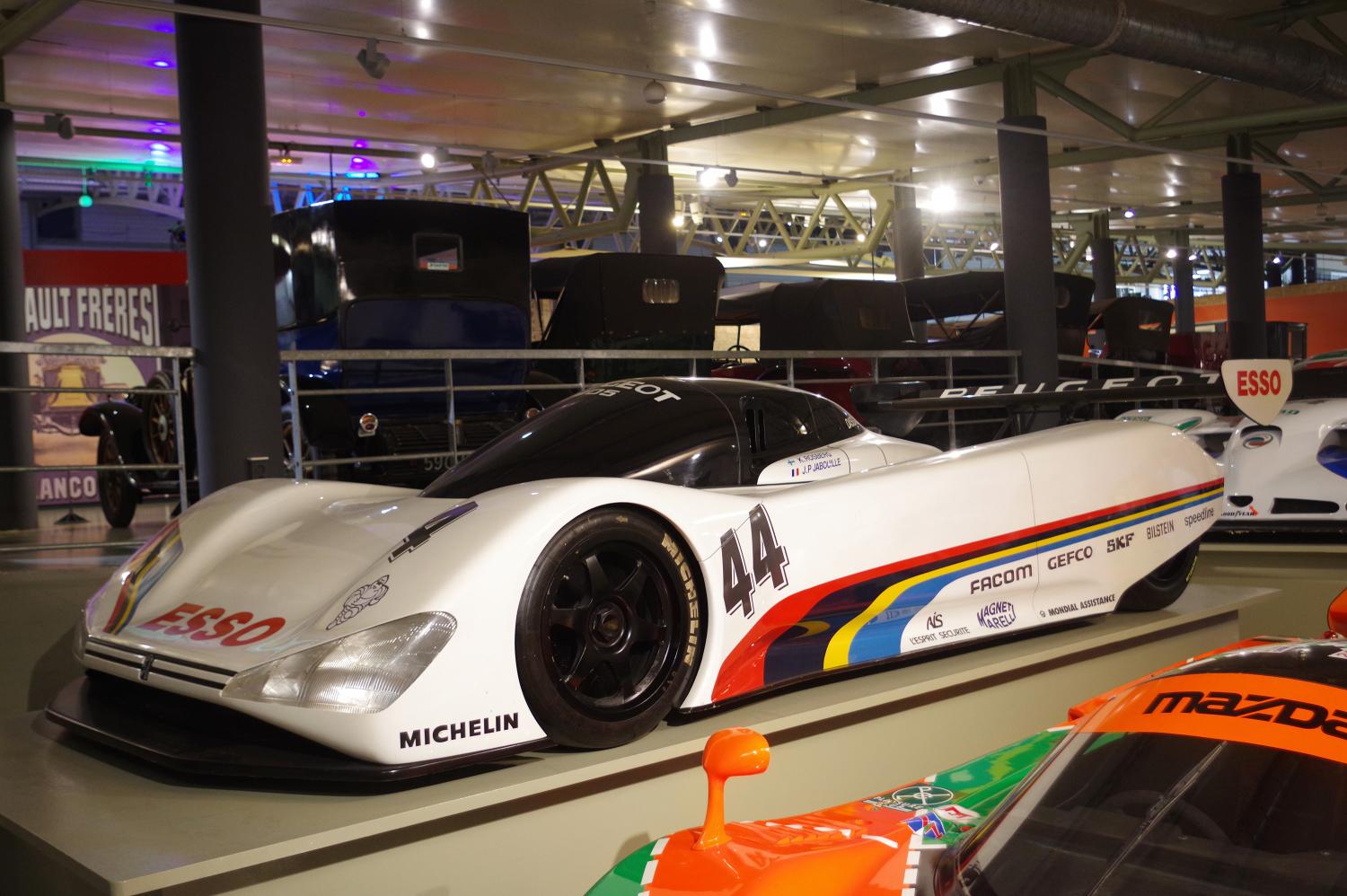Some of Peugeot's early participations in the 24 Hours of Le Mans were anything but smooth sailing, namely the 1926 disqualification of the Peugeot 174 S, driven by Boillot and Rigal, leading the race. Pit marshals alerted race stewards of a crack in a windshield mount and the car was ejected. But, the following decade, the Parisian dealer Darl’mat entered house-modified 302 DSs and the results were stunning: seventh and eighth in 1937, and fifth in 1938 thanks namely to Charles de Cortanze (the Paris Alger Le Cap record-holder at the wheel of a 203 and father of André, a future 905 engineer). In 1952 and 1953, the Peugeot 203 with a Constantin compressor was entered in the race, but without notable success. Then would come the long and outstanding saga of the WM (for Welter and Meunier) which in 1988 would culminate in Roger Dorchy's breathtaking speed record established in the Mulsanne Straight at 405 kph.
Peugeot returned to Le Mans officially in 1991 to compete in the new FIA World Marques Championship, fielding two Peugeot 905s equipped with carbon brakes. However, neither made it to the checkered flag: one suffered a broken engine and the other a failed gearbox. The 905 had been designed as a true endurance racing car by a competition department led by Jean Todt. The 905 was equipped with V10 engine, an innovation at the 24 Hours of Le Mans, thanks to the talent of engineer André de Cortanze and his friend, the reputable aerodynamicist Paolo Catone. Wind tunnel tests had been conducted at Dassault Aviation. In 1992, the cera-metallic quad-disc clutch was replaced in favor of a tri-carbon disc clutch. A team-driver radio link system was installed for direct contact or digital link communication.
A 20% chance of winning
In 1992, three new Peugeot 905s took the start in the 24 Hours of Le Mans. Several improvements had been made to the preceding model. Also on the starting grid were a Peugeot Spider Orion and a Peugeot 905 Spider WR. Out of the gate, Mazda grabbed the top spot but by the 24th lap, the #1 Peugeot 905 snatched the lead and held it to the finish. For its first win, the 905 covered 4,787.200 km at an average 199.340 kph. Even Jean Todt had given the 905 a 20% chance of winning.
The next year, Peugeot entered three 905s equipped with a carbon cockpit and a sequential transverse gearbox in its quest for a second consecutive victory. With the return of grand touring cars that year, fuel consumption limits were nixed in favor of intake flanges. On the starting grid, the #3 Peugeot 905 was not even in the top 10, but by the fifth hour the car was second in the race. By the 12th hour, it had covered 188 laps (2,556.800 km), a full 17 laps more than in 1992. The car won the race after 5,100 km with only a one-lap lead.
On the heels of that win, and despite the development of the ultimate 905 nicknamed "Supercopter," Peugeot Sport withdrew from competition. The French manufacturer returned in 2007, shaking up the 24 Hours of Le Mans with the diesel engine that made the marque's reputation around the world, winning the race in 2009 with the 908 HDi. Jean Todt became the head of Scuderia Ferrari in Formula 1 before becoming the current president of the FIA on 23 October 2009.
The scale 1 model on display at the 24 Hours Museum was first presented at the Paris Motor Show in late 1990. It boasts the racing number 44 used by the 905 driven by Jean-Pierre Jabouille and Keke Rosberg in the first rounds of the FIA World Marques Championship held in Montreal (in September) and Mexico (7 October). The 905 made its first appearance at the 24 Hours of Le Mans in 1991.
At the 24 Hours of Le Mans Museum, the ACO tells the epic tale of motoring in La Sarthe and the success of its legendary international race through 140 select vehicles. Bentley, Ferrari, Jaguar, Ford, Porsche, Matra, Audi, Peugeot, Toyota... iconic models illustrating the greatest names of motorsport take visitors through almost a century of history at the world’s greatest endurance race. Temporary exhibitions add a topical note to the permanent displays which can be extended with a visit of the world-famous Circuit des 24 Heures du Mans. The Museum will reopen on 1 June!
>> Find out more about the 24 Hours of Le Mans Museum <<



